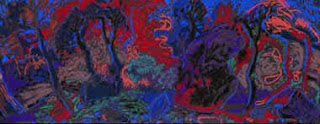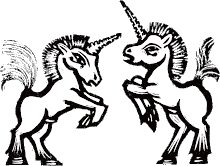7th-28th May 2015
Artist Talk: Tuesday 12th May from 6.30pm
Artist Talk: Tuesday 12th May from 6.30pm
Mark Cazalet is a new
artist to Curwen Gallery. We decided to get to know the man and his works a
little better …
Curwen Gallery: What themes and ideas were you hoping to
communicate with the body of work which you will be showing in this exhibition?
Mark
Cazalet: The classical unity of works produced in
one place, at one time with one set of concerns; the arrival of the new day and
its equivalent decline into darkness - moments of transformation.
Curwen Gallery: In the past you have said that your work is about
“moments of transformation” – does your recent work explore these same ideas?
Which experiences have inspired these works?
Mark
Cazalet: The writings of Thomas Merton, a
Benedictine Monk, who after a gadfly youth became a hermit in Gethsemani Monastery
in Kentucky. He wrote about the practice
of meditational silence and the experience of nature as a divine teacher and
inspiration.
Curwen Gallery: What is it about the depiction of nature that you find
an appropriate vehicle for your spiritual ideas?
 |
|
Magnificat Les Bassacs Wood Dawn II chalk on coloured paper, 34 x 74cm(framed) £950 |
Mark Cazalet: The history of Modernism and beyond is a radical
separation from nature and concentration on the self-referential process of
self-reflexive creativity.
That is a very worn down and claustrophobic arena. As I teach in the beautiful locale of the Luberon Valley I encourage my students to not only work from what they see but spend time really seeing what is before them, it seemed natural that I should do the same. The spiritual you ask about is probably just feeling at one with nature and thrillingly alive in this place.
Curwen Gallery: Do you feel that this recent body of work continues the
tradition of English Romantic Landscape painting in a contemporary manner?
Mark
Cazalet: I am very wary of any attempt to continue
the tradition of English Neo Romantic or Romantic Tradition, despite being very
influenced by both epochs. We have to
make work that comes out of our own period and neither rely on the collateral
of others achievements nor the relevance of their work to their time.
 |
| Magnificat Les Bassacs Wood DawnV chalk on coloured paper,34 x 74cm (framed) £950 |
Equally
we are formed by the traditions of our heritage and Romanticism is by no means
worn out with its emphasis on the individual’s perception, and nature being an
immeasurably precious source of inspiration as well as the means of our
existence – these it seems are ever-truer realities today. Perhaps for the first time there is an elegy
to a passing fragile nature that will soon be mourned by the following
generation.
Curwen Gallery: You have had a number of quite profound religious experiences. How have these experiences changed your world view and the artwork that you create?
Curwen Gallery: You have had a number of quite profound religious experiences. How have these experiences changed your world view and the artwork that you create?
Mark
Cazalet: As my friend Timothy Winton replied when I
asked him the same question: how does a fish feel about water? The religious viewpoint is all I do and see,
so I cannot imagine answering your question as if it weren’t there. It is the element in which I exist so
everything is religious. Re Ligare – to bind up a thing which is broken, a
splint for healing.
 |
| Magnificat Les Bassacs Wood Dawn VII chalk on coloured paper,34 x 74cm (framed) £950 |
Curwen Gallery: Do you find that your faith can be problematic in the
(largely secular) London art world? Do you think that this niche has created
opportunities for you or not?
Mark
Cazalet: It has caused me problems with specific
gallery owners and certainly derailed one or two opportunities, probably for
the best in hindsight. I am not
convinced that the Art World is secular, increasingly people (in private)
follow all manner of eccentric, personalised, spiritualised belief systems.
In the 1980s it was different when a legacy
of hard edged atheism ruled as a legacy of the radical political avant-garde. Now commerce and hyper individualism, more
corrosive ultimately, allow a broader inclusivity on the surface at least. The problem comes with representing The
Church as if one were an ambassador or preacher, neither of which I am- nor
want to be seen as.
 |
| Les Basaacs Magnificat 5,oil on board, 17 x 24cm £650 |
Curwen Gallery: How did your work develop during your experience of
living in seclusion during the Albers Foundation residency? Is this the start
of the body of work which you will be showing with us?
Mark
Cazalet: The work I am showing with you prefigured
the Albers work but also was its germination.
Josef Albers’ Interaction of
Colour was a seminal text. This is a
very large question. I am still working
through the consequences of the two Albers Foundation residencies.
 |
| Nunc Dimitis Les Bassacs Wood Night I chalk on coloured paper, 34 x 74cm (framed) £950 |
Curwen
Gallery: Did you find the
seclusion of the residency led you to produce less allegorical works? What is
it that caused you to move away from the more figurative, myth inspired works
which you are better known for?
Mark
Cazalet: Colour has always been my chief pleasure
and means of communication whether with figurative or in pure terms. I simply sought to allow the experience of
being still and opening my eyes to predominate.
Anni Albers said “let them speak,” meaning one’s materials. I still have a way to go on that front and it
seems the next step.
Curwen Gallery: Your, often controversial, ecclesiastical commissions
form a large part of your opus. Do you consider them as a separate strand of
working to the small pastel drawings that you will be showing with us? How are
these two strands of working linked?
Mark Cazalet: The ecclesiological commissions and personal, biblically inspired works are as much a core part of me as the colour works. Having a brief to fulfil and an architectural context to satisfy do load on the complexity, to say nothing of working with committees and patrons. Obviously to walk alone and respond to whatever one sees is very wonderful in its freedom; a sacred flaneur.
Curwen Gallery: The majority of your previous works are figurative
drawings which re-interpret biblical mythology in a contemporary manner. What
inspired this shift in your focus to the exploration of nature in a semi
abstract manner?
Mark
Cazalet: Actually neither: I have always had a semi
abstract streak, which waxes and wanes, but certain shows such as The Museum of
London’s Cathedrals of Industry or The Path to Calvary have stressed the most
figurative side. It really is all one, just
different periods and themes.
Curwen Gallery: The wood and the tree are recurring motifs in your work.
What are the references you are drawing from this symbol? Why is the tree and
the wood a focus of your recent work?
Mark
Cazalet: Silent meditation requires a still place
away from other people, or at least the intrusion from other people. A wood is both an old image of an enclosed
space in which to become lost and an increasingly difficult place to get lost
in. There are also aspects of
Heidegger’s Lichtung; the momentary clearing in a dense space that allows for
clear thought and perception.
Curwen Gallery: Are your more recent works inspired by poetry? What is
it about poetry that you feel is valuable to your artwork?
Mark
Cazalet: Poetry has always played an important role
in my work, as has theatre and Opera.
All vehicles for staging ideas in a dramatic form. But more than for the literal references. It
is in the cadence, rhythm and irresolvable nature of the best poems that I find
encouragement.
Curwen Gallery: You have travelled widely and done a number of artist
residencies on Christian Pilgrimages (with Biblelands to Egypt, Palestine and
Israel). What is it that the experience of travel and, most specifically, being
on a pilgrimage that you find beneficial to your work?
Mark Cazalet: The random
and often infuriatingly inapposite timing of inspiration. Routine is broken and the unexpected upturns
ones normal practice. Again increasingly
it is not knowing what
one is to do that provokes the most creative response.
 |
| Magnificat Les Bassacs Wood Dawn VI chalk on coloured paper, 34 x 74cm (framed) £950 |
Curwen Gallery:How did your time studying under Christian Boltanski effect your work? How did
this period relate to the period of work which you are currently making?
Mark
Cazalet: Christian was infuriating but several of
the things he said took years to filter through and finally provoke a
response. He would present himself as a
clown and yet slip in very difficult ideas that one couldn’t dismiss nor agree
with; the artist as a bad preacher who pushes buttons to get a reaction but
slips away without giving an answer, and the self- reflexive activity of making
art, a self-awareness of what one is doing even whilst doing it. I still greatly revere his paradoxical role
as teacher who claims he has nothing to teach…
 |
| Les Basaacs Magnificat 8,oil on board, 20 x 22cm £650 |
Curwen Gallery: You studied at Chelsea and Falmouth colleges of art. Was
this a crucial period of your artistic development. In what ways has your work
changed since that time?
Mark
Cazalet: I am closer to what I was doing on
foundation than any other period since, a really warm feeling of coming home
but not in the way I expected, nor the manner.






No comments:
Post a Comment